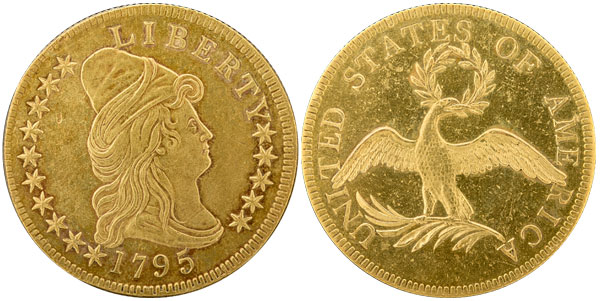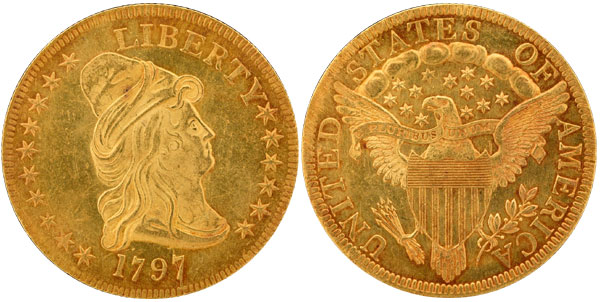Guide to U.S. Capped Bust Eagles
With a value of ten dollars, the eagle was established as the primary gold denomination within the American monetary system. The initial series is known as the Capped Bust Eagle, although the design is also sometimes referred to as “Turban Head” or “Draped Bust.” The series is divided into two different subtypes based on the reverse design. High quality examples are elusive from the first subtype, and an extremely rare proof issue struck for presentation purposes is included within the second subtype.

The Coinage Act of 1792 established three gold denominations known as the quarter eagle, half eagle, and eagle, carrying values of two dollars and fifty cents, five dollars, and ten dollars, respectively. Following delays related to the fulfillment of bonding requirements for mint employees, the half eagle would be the first gold denomination produced in 1795. This was followed by the eagle later that same year and the quarter eagle in 1796. Due to its high value, the eagle was primarily intended for international trade rather than domestic commerce.
The obverse design of the Capped Bust Eagle features the bust of Liberty, facing right. A portion of her drapery is visible just above the truncation of her neck. Liberty wears a Phrygian cap with a lock of hair wrapping upwards, which gives the appearance of a turban. The word LIBERTY appears above, the date below, and a varying number of stars to each side. The coins of 1795 and some from 1796 contain fifteen obverse stars. After Tennessee was admitted into the Union in mid-1796, a sixteenth star was added. In 1798 the number of stars was reduced to thirteen, which would remain the case until the end of the series.
The initial reverse design, known as the “small eagle” subtype, was used from 1795 to 1797. The design features an eagle with its wings spread, holding an olive wreath in its beak. The eagle is perched upon a palm branch, which usually has thirteen leaves, although one reverse die is known with nine leaves. The words UNITED STATES OF AMERICA surround the image with the area beneath the eagle left empty. As with other early United States gold coinage, there is no indication of the denomination.

The second reverse, known as the “heraldic eagle” subtype, is based on the Great Seal of the United States. An eagle is depicted in a rather unnatural position with a shield against its breast. Thirteen small stars appear between the eagle’s head and a cluster of clouds above. The eagle’s talons separately grasp an olive branch and a bundle of arrows. Once again, UNITED STATES OF AMERICA appears surrounding with no indication of the denomination. This reverse design was introduced during 1797 and used until the conclusion of the series in 1804. The common obverse and both reverse designs were created by Robert Scot.
The Capped Bust Eagle experienced low mintages throughout the production of the first subtype due to limited gold deposits and the greater preference for half eagles. The second subtype saw generally higher mintages until President Thomas Jefferson halted the production of both silver dollars and gold eagles in 1804. At this time the Napoleonic Wars had driven the world price of gold higher and large quantities of gold coins were being melted. The gold eagle denomination would not resume production until 1838 when Congress adjusted the bimetallic ratio of gold and silver within U.S. coinage.

